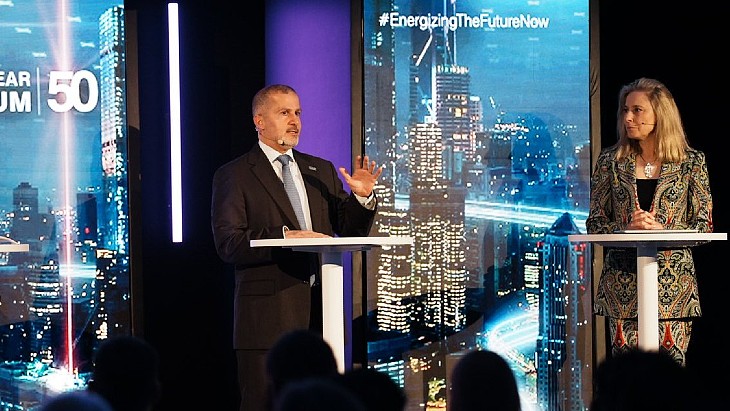Kenya has made significant progress in its preparations to develop a nuclear power infrastructure, an team of International Atomic Energy Agency (IAEA) experts has concluded.
 460.jpg) |
| Ochilo Ayacko addresses the opening session of the INIR mission (Image: M Van Sickle/IAEA) |
The 10-strong IAEA team made its comments at the conclusion of an eight-day Integrated Nuclear Infrastructure Review (INIR) mission, carried out at the invitation of the Kenyan government. The team also made recommendations and suggestions to help the country as it further develops its nuclear infrastructure.
Kenya is Africa's ninth-largest economy with a population of 44 million. The country's development blueprint, known as Vision 2030, recognises energy as an "enabler" underpinning efforts to achieve economic, social and political goals under a strategy to establish Kenya as a "newly industrializing middle-income country" by 2030.
The country's National Economic and Social Council recommended in 2010 that Kenya should start using nuclear power by 2020 to meet its growing electricity demand, and the same year the Kenyan Ministry of Energy established a nuclear electricity project committee, subsequently transformed into the Kenya Nuclear Electricity Board (KNEB). The statutory body is mandated with fast-tracking the development of nuclear electricity generation in Kenya with a mission to promote "safe and secure application of nuclear technology" for sustainable electricity generation and distribution.
The IAEA plays an active role in supporting the agency's member states that wish to develop nuclear infrastructure, and earlier this year IAEA director general Yukiya Amano said that supporting Africa was a high priority for the Vienna-based organization. INIR missions form part of that support. They enable representatives from the country in question to have in-depth discussions with international experts – in the case of the Kenyan INIR, from South Africa, Spain and the UK as well as IAEA staff – about experiences and best practices. The results of the INIR mission, including any recommendations, can help the member state to develop an action plan to address any gaps and help with the development of national infrastructure.
The INIR team highlighted Kenya's progress in capacity building and stakeholder involvement, and in reviewing infrastructure requirements in a comprehensive manner. "Kenya has given thorough consideration to the infrastructure that will be necessary should the country decide to proceed with the development of a national nuclear power program," INIR mission leader Jose Bastos said.
Areas for further action identified by the mission include establishing the key goals and requirements to guide the nuclear power program, and setting up the necessary legal and regulatory framework.
Ochilo Ayacko, executive chairman and CEO of KNEB, welcomed the INIR team's findings, and underlined Kenya's commitment to developing a nuclear power program. "This gives us the impetus to proceed to the next stages and gives the government a good framework of the actions and issues requiring further development," he said.
Researched and written
by World Nuclear News




_23621.jpg)

_63865.jpg)
_18570.jpg)





